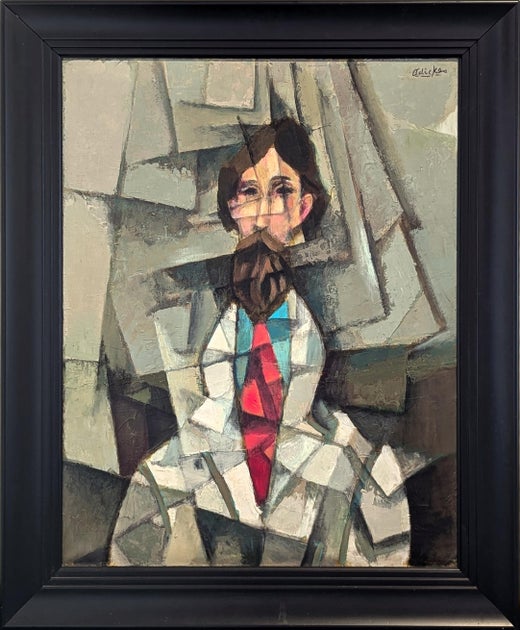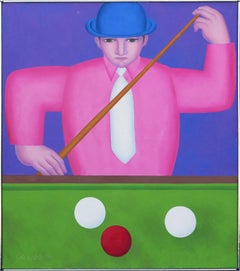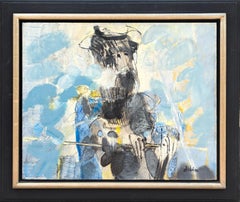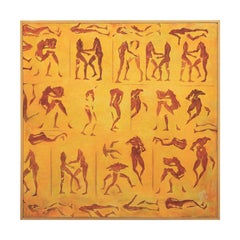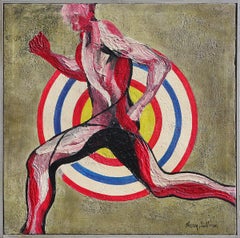David Adickes"Two Men, One Boy" Abstract Figurative Portrait Painting1958
1958
About the Item
- Creator:David Adickes (1927, American)
- Creation Year:1958
- Dimensions:Height: 48 in (121.92 cm)Width: 25 in (63.5 cm)Depth: 2 in (5.08 cm)
- Medium:
- Movement & Style:
- Period:
- Condition:Wear consistent with age.
- Gallery Location:Houston, TX
- Reference Number:Seller: DA_711stDibs: LU551311240302
David Adickes was born in Huntsville, Texas in 1927 and graduated from Huntsville High School in 1943. Nearing the end of World War II, at age 17, he joined the U.S. Air Force and regularly traveled to France. “I always liked art and was always drawing in the margins of my book,” Adickes said. “But being in Paris where there are galleries and museums on every corner — as just a small town kid from Huntsville, Texas — that was my turning point.” After completing his service, Adickes returned to Huntsville and earned his bachelor’s degree from Sam Houston State University. He then studied art with artist Fernand Leger in France for two years before moving to Houston to open his own art school.
(Biography provided by Reeves Antiques)
You May Also Like
1940s Modern Abstract Paintings
Masonite, Oil, Tempera
1940s American Modern Abstract Paintings
Masonite, Oil, Tempera
1940s American Modern Abstract Paintings
Masonite, Oil, Tempera
1940s American Modern Abstract Paintings
Masonite, Oil, Tempera
1930s American Modern Figurative Paintings
Canvas, Oil
1940s American Modern Abstract Paintings
Canvas, Oil
2010s Modern Abstract Paintings
Linen, Oil
2010s Modern Abstract Paintings
Oil
Mid-20th Century Modern Figurative Paintings
Oil, Board
Mid-20th Century Modern Figurative Paintings
Oil, Board
More From This Seller
View All1970s Modern Figurative Paintings
Canvas, Oil
1990s Modern Figurative Paintings
Canvas, Oil
20th Century Modern Abstract Paintings
Canvas, Oil
21st Century and Contemporary Modern Figurative Paintings
Canvas, Oil
1950s Modern Figurative Paintings
Oil, Canvas
20th Century Modern Figurative Paintings
Oil, Board
